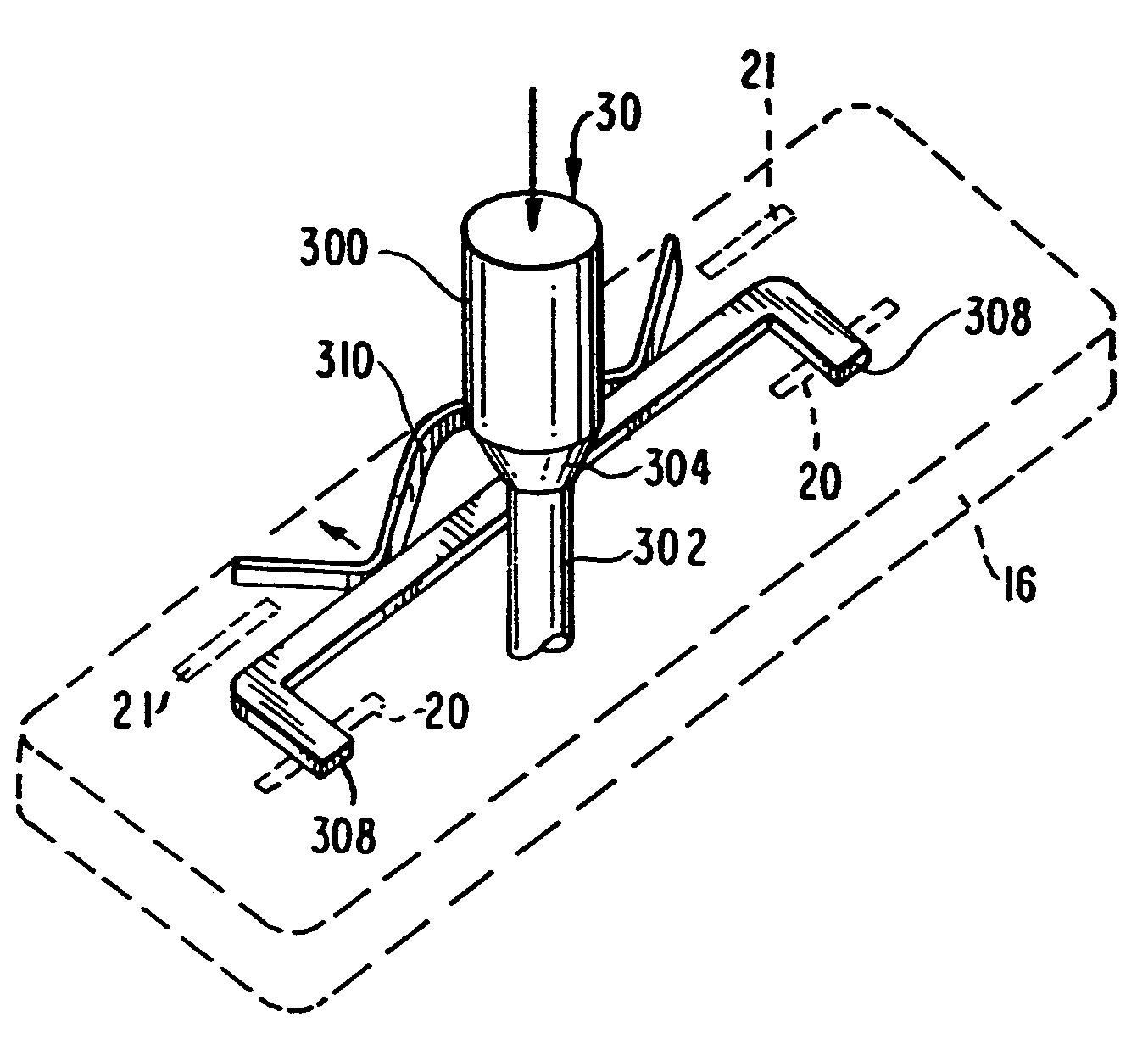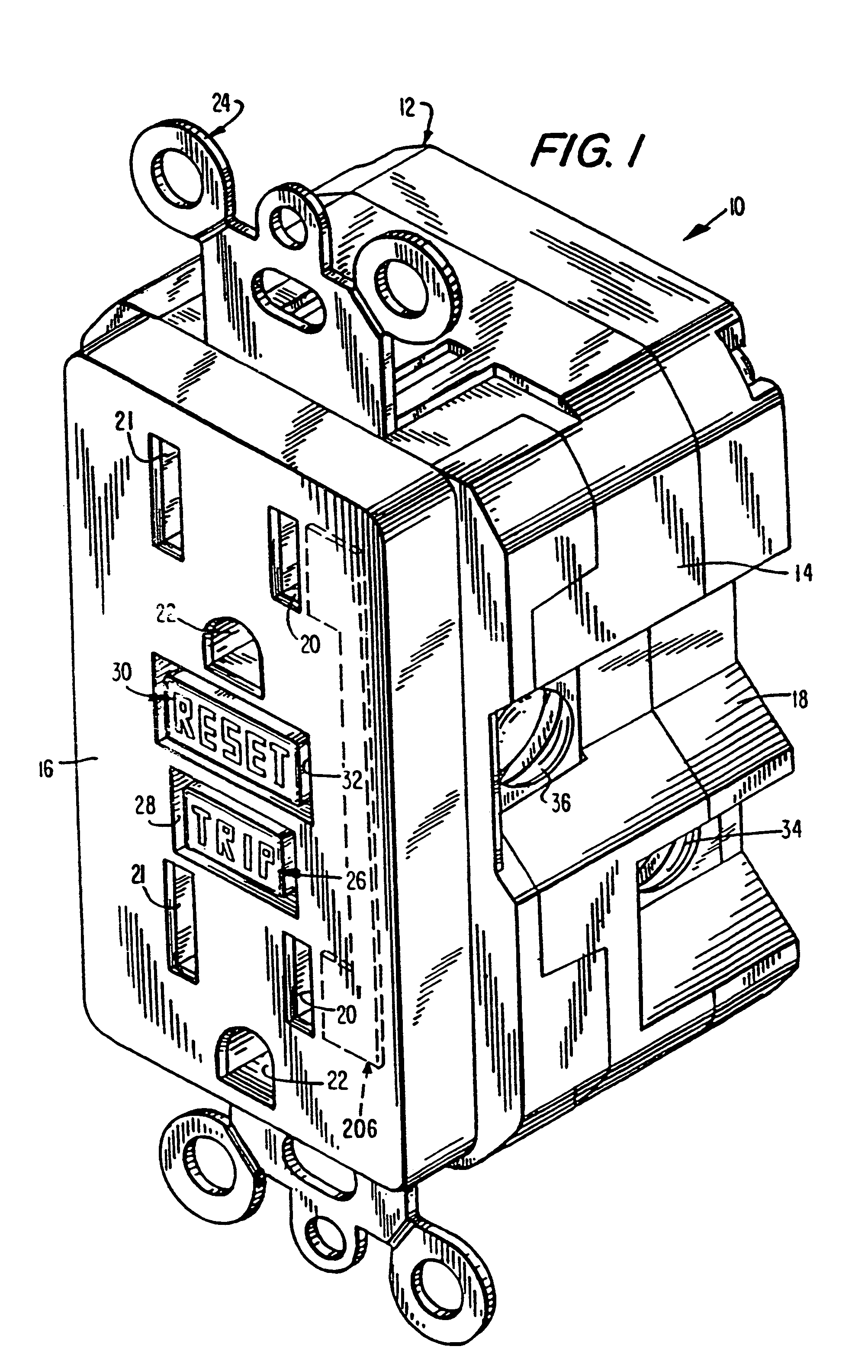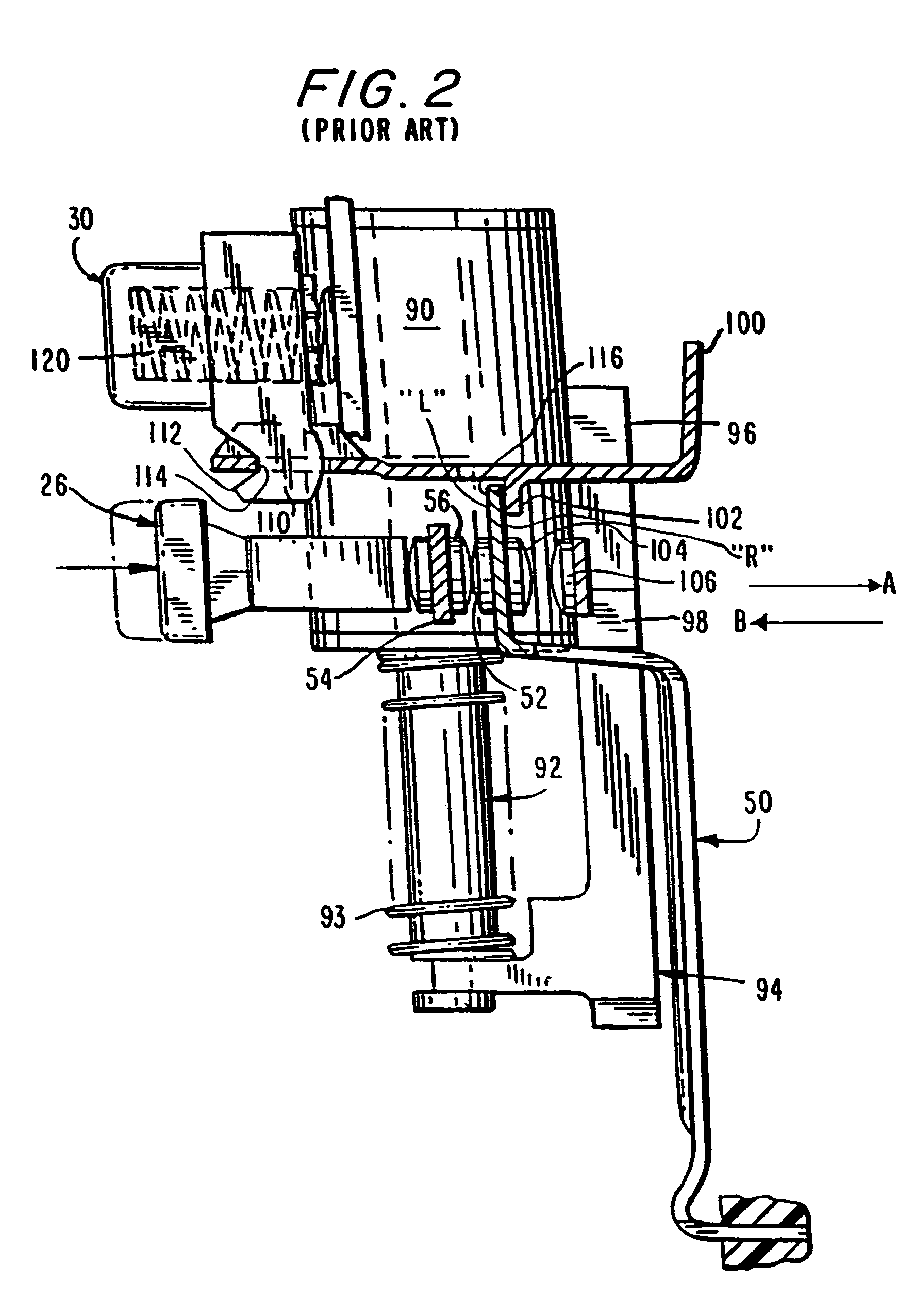GFCI receptacle having blocking means
a ground fault circuit interrupter and receptacle technology, applied in circuit-breaking switches, circuit-breaking switches for excess currents, emergency protective arrangements for limiting excess voltage/current, etc., can solve problems such as tripping of devices, device with inoperative trip mechanism to be reset without ground fault protection, and electricians' difficulty in distinguishing between line side and load side conductors, so as to eliminate the need for bridge contacts
- Summary
- Abstract
- Description
- Claims
- Application Information
AI Technical Summary
Benefits of technology
Problems solved by technology
Method used
Image
Examples
Embodiment Construction
[0024]The present application contemplates various types of circuit interrupting devices that are capable of breaking at least one conductive path at both a line side and a load side of the device. The conductive path is typically divided between a line side that connects to supplied electrical power and a load side that connects to one or more loads. The term resettable circuit interrupting devices include ground fault circuit interrupters (GFCI's), arc fault circuit interrupters (AFCI's), immersion detection circuit interrupters (IDCI's), appliances leakage circuit interrupters (ALCI's), and equipment leakage circuit interrupters (ELCI's) which have a receptacle for receiving a plug.
[0025]For the purpose of the present application, the structure or mechanisms used in the circuit interrupting devices, shown in the drawings and described below, are incorporated into a GFCI protected receptacle which can receive at least one plug and is suitable for installation in a single gang junc...
PUM
 Login to View More
Login to View More Abstract
Description
Claims
Application Information
 Login to View More
Login to View More - R&D
- Intellectual Property
- Life Sciences
- Materials
- Tech Scout
- Unparalleled Data Quality
- Higher Quality Content
- 60% Fewer Hallucinations
Browse by: Latest US Patents, China's latest patents, Technical Efficacy Thesaurus, Application Domain, Technology Topic, Popular Technical Reports.
© 2025 PatSnap. All rights reserved.Legal|Privacy policy|Modern Slavery Act Transparency Statement|Sitemap|About US| Contact US: help@patsnap.com



